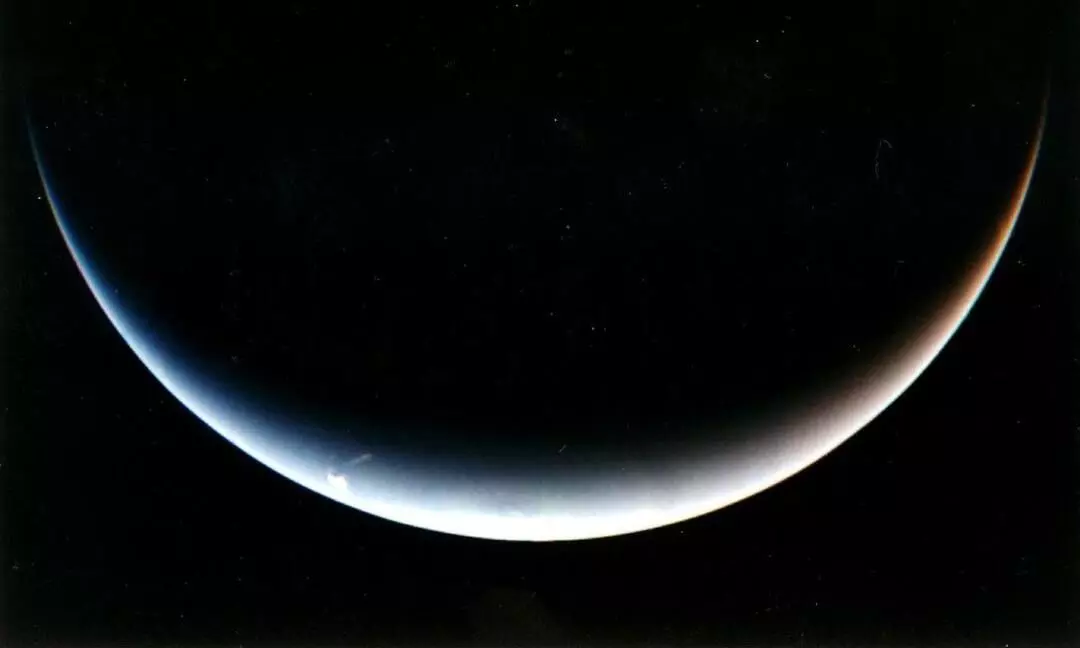
NASA unveils stunning image of Neptune's south pole
text_fieldsNASA continues to captivate space enthusiasts with its breathtaking images of the universe, and its latest release is no exception.
The agency's social media channels, known for educational videos and stunning visuals, recently featured a remarkable photograph of Neptune's south pole captured by the Voyager 2 spacecraft.
This image, taken as Voyager 2 sped away from Neptune in 1989, shows the planet's southern pole curving along the bottom of the frame, resembling a smile. The vibrant blue of Neptune fades into a pale yellow along this curve. NASA highlighted this unique feature, noting that Neptune's south pole is about 10 degrees Celsius (18 degrees Fahrenheit) warmer than the rest of the planet.
Voyager 2, which has been operational since 1977, holds the distinction of being the only spacecraft to have visited both Uranus and Neptune. During its historic journey through the outer solar system, Voyager 2 explored all four gas giant planets, uncovering and photographing many of their moons.
In November 2018, Voyager 2 entered interstellar space, a region between stars filled with material ejected by the death of nearby stars millions of years ago. Its twin, Voyager 1, reached interstellar space in August 2012. Both spacecraft are now part of the Voyager Interstellar Mission, exploring the outermost edges of the Sun's influence, venturing where no human-made object has gone before.
Adding to the intrigue of Neptune, astronomers recently observed a mysterious dark spot in the planet's atmosphere using the European Southern Observatory's Very Large Telescope (VLT) in Chile. This marks the first time such a dark spot has been observed from Earth. Alongside the dark spot, astronomers also discovered an unexpected smaller bright spot. These findings have been published in the journal Nature Astronomy.
NASA's Instagram post elaborated on these discoveries, emphasizing Voyager 2's significant achievements and its continued mission in interstellar space. The image description highlights Neptune's southern pole, a striking blend of blue and pale yellow, emphasizing the spacecraft's remarkable journey and the ongoing exploration of our solar system's outermost regions.























